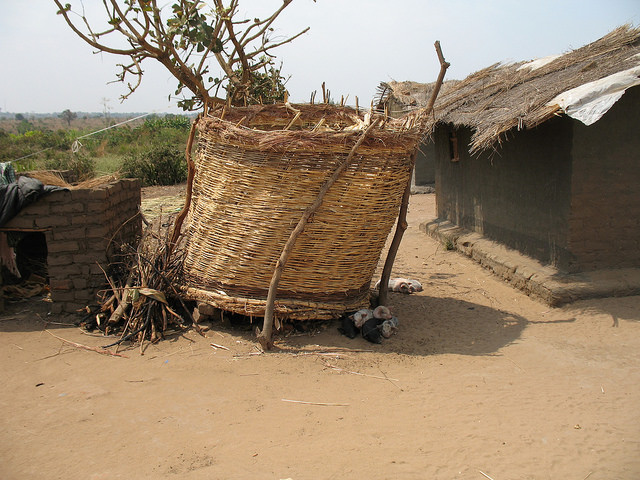The Joseph Project – Part 2
(This is the second in the series on the Joseph Project, a new initiative by the people of Malawi and the Malawi Project. This program will put in place the means by which village farmers can generate, and store sufficient food supplies to feed the people during poor production years. In this second story Wilson Tembo recalls the progress to date, on the Malawi side, to institute a program that is successful in storing food from successful harvests in order to care for orphans, widows, and the needy in times of food shortage.)
Started with an Idea
At first it was just a thought, an idea. But a good idea can lead to many opportunities that transform people’s lives. When it comes to our agricultural capabilities in Malawi we have good arable land, and if properly utilized can produce enough food for our consumption and for sale to other areas of Africa. However, even though the land is rich, our agricultural sector faces many challenges that result in limited harvests. One obvious problem comes from the fact we remain complete dependent on sufficient and timely rains. This is a major factor leading to reductions or failure in crop harvest. Let me explain.
In Malawi our major crop is maize (corn). It provides food and income for over 300 million people in poor, rural, smallholder farm communities in Eastern and Southern Africa. Maize is such a factor that a failure in the maize crop is catastrophic to a large part of the population of sub-Saharan Africa. Because of dependency on the weather, food security has been difficult, and at times, impossible to achieve.
A second factor in the struggle to have enough food is in poor long range planning by the part of poor farmers. In a good year, when harvests are high, many farmers do not keep back enough food for a rainy day. In a bad year they starve. This problem is yet to be fully explored and dwelt with in Africa. Again, allow me to explain.
90% Compared to 5%
In recent decades, significant focus has been on increasing production globally. For instance, 95% of the research investment during the past 30 years was focused on increasing production, and only 5% toward reducing losses (Kader 2005; Kader and Roller 2004; WFLO 2010). It is no secret food production faces several challenges that range from limited farmland, climate change, as well as the scarcity of water and equipment. To achieve food security there is a strong need to focus on increasing food availability through the reduction of post harvest losses at all stages of food handling.
In order to address the need to store food “for a rainy day” the Malawi Project is taking the lead in helping create farm co-operatives where a group of farmers go together to raise their crops, then store a portion of it in a “community” warehouse that can make food available to the needy, and those who suffer crop losses during bad harvest years.
The idea of “community grain bins” was recently proposed to representatives from 8 churches in the Madisi area of Dowa District. (Madisi is a small trading center 81 kilometers, or 50 miles north of Lilongwe. Dowa District has a population of approximately 500,000 people). The meeting had been called to discuss how to best plan ahead and reduce postharvest losses. The Malawi Project, following a similar line of thought was ready to offer funds for concrete and roofing, along with some technical support. Seven of the eight representatives stepped forward to say they would make bricks and build the structures for their communities. One minister compared it to a bank. “It’s the way we keep our money in the bank. It is helpful because we can access and use the money when it is needed.” One after another they agreed and they were ready to begin the project. One preacher noted how good it would be for the churches to work as a group to cultivate the land together to care for the hungry in their communities.
Two Locations, 20 Congregations
By the time the meeting had concluded it had been agreed that the members would start working in two separate locations where 20 congregations would participate. The other 12 church leaders, who were not at the meeting, would be advised of this program and a proper committee would be appointed.
It appears we are on to something that will help give freedom from hunger to many people. When we combine this with the V-tractors, the drip irrigation systems, and the basic utility vehicles, the grain storage bins will round out the cycle that can break the back of the next famine. It is anticipated that each grain storage unit will hold enough food to care for 500 people.

